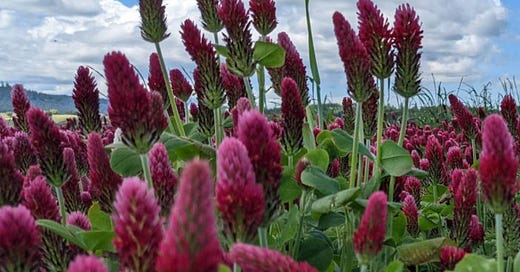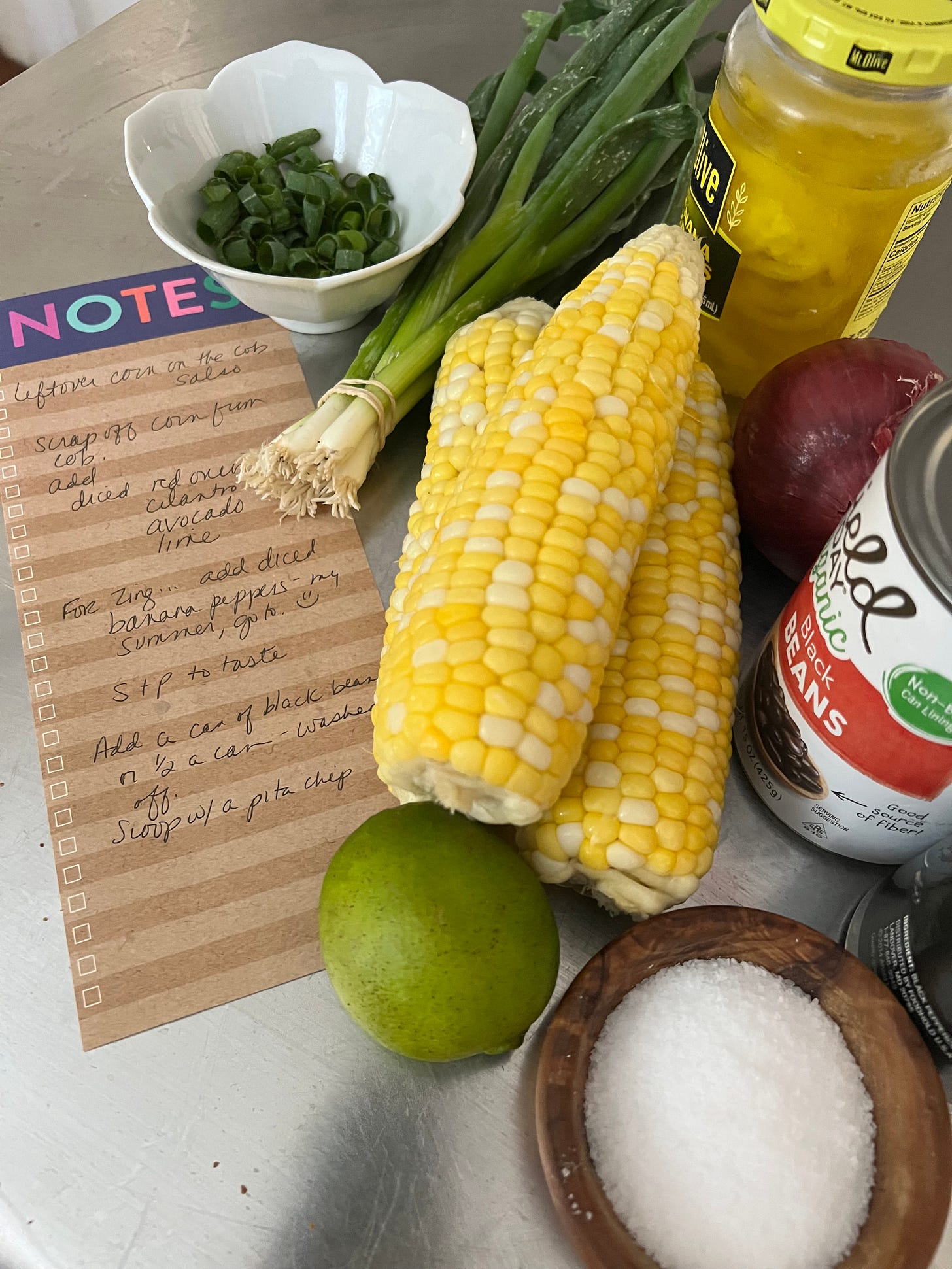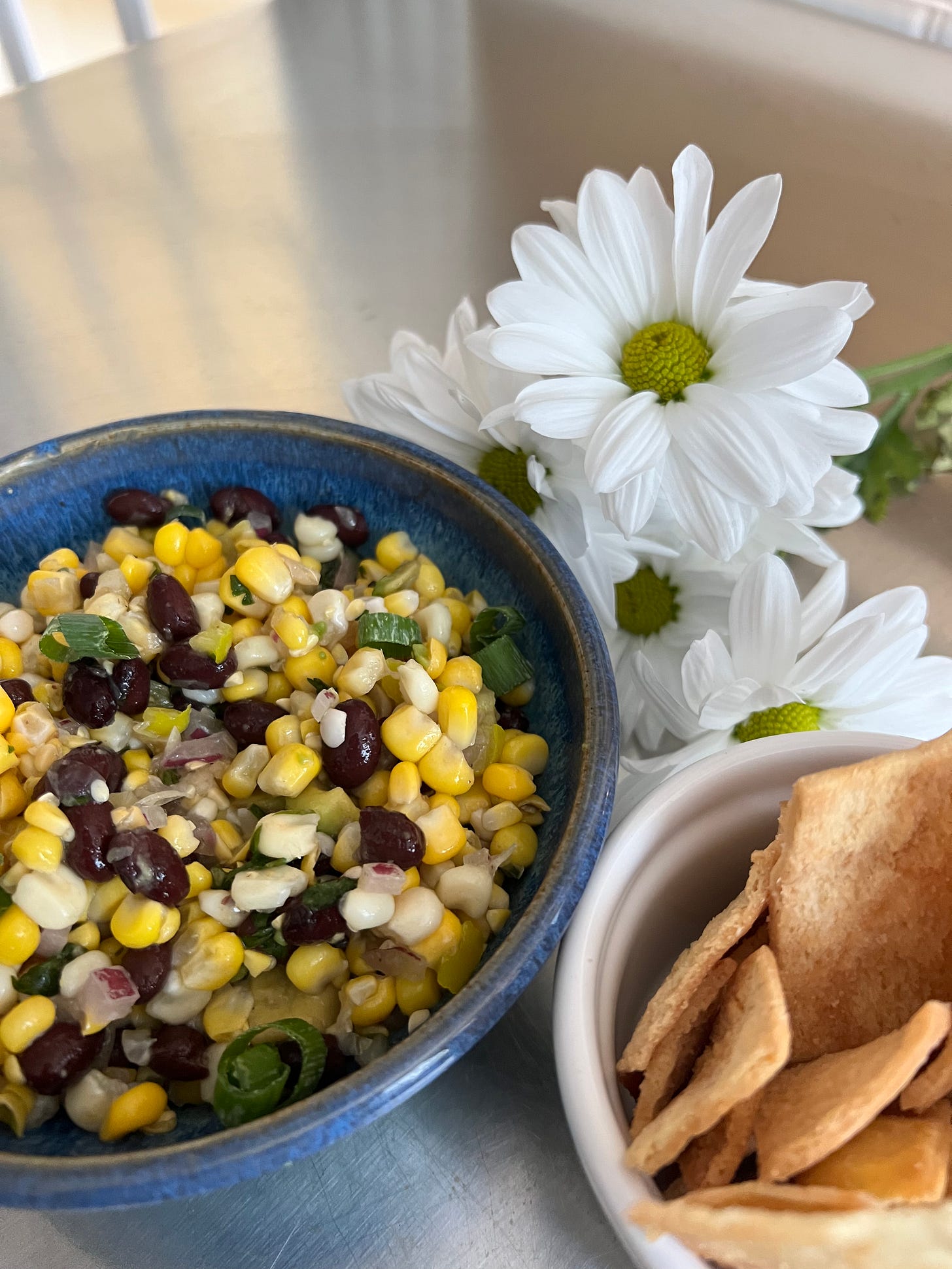Food is not Political
Ruth Riechl takes us into the nation's food system vulnerabilities during the pandemic.
Last Thursday evening I attended Newport Film’s viewing of Food and Country at Fort Adams State Park. With the backdrop of the Narragansett Bay and the Newport Bridge, the crowd was educated on the state of food during the pandemic. As with many industries during Covid critical issues for the food and agricultural sector could not be ignored if families and farms were to survive.
The food system was not set up to flow during a pandemic. It became apparent that if a farm’s sole customer was a restaurant they may be in trouble if they did not pivot quickly. And that same restaurant, without customers coming in to dine would be shutting down if their model did not change. From the vegetable growers in Ohio, realizing they have over 100 people who work on the farm counting on them, to the rancher in Pratt, Kansas, visiting Washington to educate representatives on farms taking a hit each year while the big 4 meat packers are making millions in profits, to the Bay area chef who cannot pay the rent who is including her employees in the decision-making, we had a front row seat to the real fears happening in real time. Ruth Riechl, trailblazing food writer and change agent, took us into the homes, farms, restaurants and hearts of Americans surviving through Covid in a very inhospitable landscape.
From the director, to the producer, to the editing of the stories, to the narration, the 99 minute documentary is well-balanced and the message comes through that these are families, people, and communities trying to survive and risking quite a lot on their way. There is the Nebraskan farmer convincing her family to go organic for economic reasons because it makes sense to survive and profit, not for the same reason that the activist urban farmer in the South Bronx is training individuals in sustainability and that is ok. It is food and food should be available to all, not politicized. The film does not beat the viewer over the head, nor direct us to feel one way or another, but rather through watching each intimate story unfold we root for all to be successful.
Leaving the film, I felt compelled to look further in my own backyard; the bean. I have heard about beans (all legumes really) being a great cover crop. I knew something about how beans create their own fertilization but I couldn’t explain it. So after digging for a while, the summary below is what I found. Additionally, when I research I like to include references or links to sites so that readers who are interested may go further if they so choose. Otherwise, please know that I have done my best to capture in layman's terms a digestible amount of information regarding legumes as a cover crop to move the conversation and our knowledge forward.
No time for a cover crop lesson? Don’t miss the corn salsa recipe at the end.
A Cover Crop Revolution
In the world of agriculture, where large-scale monoculture farming has been the norm for decades, there is an opportunity that was used historically, with the potential to revolutionize the way we grow crops and address pressing issues such as climate change, soil degradation, and food equity. This opportunity is none other than beans, legumes, that have been overshadowed by major cash crops like corn and soybeans. Legumes are and have been an exceptional cover crop that can transform farming practices and benefit both farmers and the environment.
Quick aside: The US can learn from European ideas as they have been committed over the last 5 years to seek out better solutions. With societal challenges such as food security and sustainable agriculture, beginning in the spring of 2017, the European Union through the European Commission issued grants. One such recipient was Legvalue. Their platform was to deliver greater EU self sufficiency in vegetable protein production. Ok, enough about Europe.
What is a Cover Crop?
To begin, here in the US, let's understand what a cover crop is and why it matters. Cover crops are non-cash crops planted primarily to protect and improve the soil. They are typically grown during the off-season or alongside main cash crops. The use of cover crops is not new, but it has been largely overlooked or underutilized in modern industrial agriculture. This neglect has contributed to numerous challenges, such as soil erosion, loss of soil fertility, and increased reliance on chemical fertilizers and pesticides. A few years back, the documentary, Kiss the Ground explained much about the soil erosion and you may be familiar with the topic.
Benefits
Enter beans as cover crops. Beans are part of the legume family, which has a unique and remarkable ability to fix atmospheric nitrogen. Unlike most other plants, beans host symbiotic bacteria called rhizobia in their root nodules, which convert nitrogen from the air into a usable form for the plant. This natural nitrogen fixation process enriches the soil with essential nutrients, reducing the need for synthetic fertilizers. By incorporating beans as cover crops, farmers can harness this nitrogen-fixing power, enriching the soil while minimizing their ecological footprint. Multiple reports showcased cover crop “cocktails,” which entails a mixture anywhere from 7 to 20 seed varieties including lentils and fava beans alongside, grasses and cereals to improve the soil organic matter among many benefits.
Speaking of benefits, a significant protection of using legumes as a cover crop is their role in combating climate change. Agricultural practices, such as excessive tilling and synthetic inputs, contribute to greenhouse gas emissions and soil carbon depletion. By adopting cover cropping with nitrogen-fixing beans, farmers can enhance soil carbon sequestration. Beans' ability to fix nitrogen enhances soil health, leading to higher organic matter content, thus sequestering more carbon from the atmosphere. This practice effectively becomes a powerful tool in the fight against climate change.
Moreover, the use of legumes as cover crops helps combat soil erosion, which has been a pressing issue in modern agriculture. The dense root systems of legumes like beans create a protective cover for the soil, reducing erosion caused by wind and water. This prevents valuable topsoil from washing away and improves overall soil structure and fertility. By incorporating legumes and other seeds from the cocktail into crop rotations, farmers can break the cycle of soil degradation and enhance the long-term productivity of their land.
In addition to environmental benefits, beans as cover crops promote food equity and resilience. Large-scale monoculture farming often leads to a limited variety of crops being grown, resulting in reduced biodiversity and a greater risk of crop failure due to pests, diseases, or climate-related events. By diversifying crop rotations to include beans and other cover crops, farmers can enhance the resilience of their farming systems. Furthermore, beans, as a nutritious food source, can be valuable in promoting food security and supporting local communities
To learn more about the research and scientific studies supporting the benefits of beans as cover crops, interested readers can refer to reputable sources such as academic journals, agricultural extension websites, and reports from organizations like the United States Department of Agriculture (USDA) and the Food and Agriculture Organization (FAO) of the United Nations. These sources offer a wealth of information on cover cropping practices, the benefits of legumes like beans, and their potential to transform agriculture positively.
Conclusion
The informed consumer can change systems. Requiring transparency and information on where the food is sourced is one way. We cannot expect food to be cheap, cheap, cheap and also sustainably grown and good for you. Beans and other legumes are not just a nutritious food source but also a game-changing cover crop in the world of agriculture. Their ability to fix nitrogen, combat climate change, prevent soil erosion, and enhance food equity makes them an invaluable ally for farmers and the environment alike. By embracing beans as cover crops, we can embark on a journey towards a more sustainable, resilient, and equitable agricultural future.
As we exited the film with vim and vigor on how to help this movement. I could only think of my readers and I could not wait to share it with you. If you have the opportunity to see the film it will give you insight into the time honored feeling that when you work side-by-side with people who want good things for all, the best results can happen. Will Harris, the Georgian gentleman who transformed his farm to 100% carbon negative will not leave my psyche for a while. It's time to hang up the expectation of cheap food no matter the cost. Instead embrace the farmers and those people creating our food, give them the recognition they deserve and sow the seeds of change for a better tomorrow. For now, we can start with beans!
Additional sites
Managing Cover Crops Profitably, Third Edition
Recommended Recipe
Corn on the cob salsa with black beans, red onion, cilantro, banana peppers and lime
Great recipe to use when you have leftover summer corn and need to have a pretty healthy/yummy cool snack to serve on hot days or evenings.
Ingredients
3 ears of corn
1/2 of a 15oz can of black beans rinsed (add the whole can if you want more beans)
1/4 of a medium red onion-diced
avocado (optional)-sliced into criss/cross diagonal pieces
2 limes~1/4 cup of lime juice; if you don’t have enough add a white vinegar or rice vinegar
approximately 1/4 cup of banana peppers-diced (more or less to your taste for zing)
salt and pepper to taste
scallions (optional)
Pita chips to scoop
Scrap off the corn from the cob into a medium bowl. Add the rest of the ingredients. If you have time let it sit for 15-30 minutes. Once you like how it tastes add it to the serving bowl and sprinkle a few chopped scallions over the top for presentation. Enjoy!






